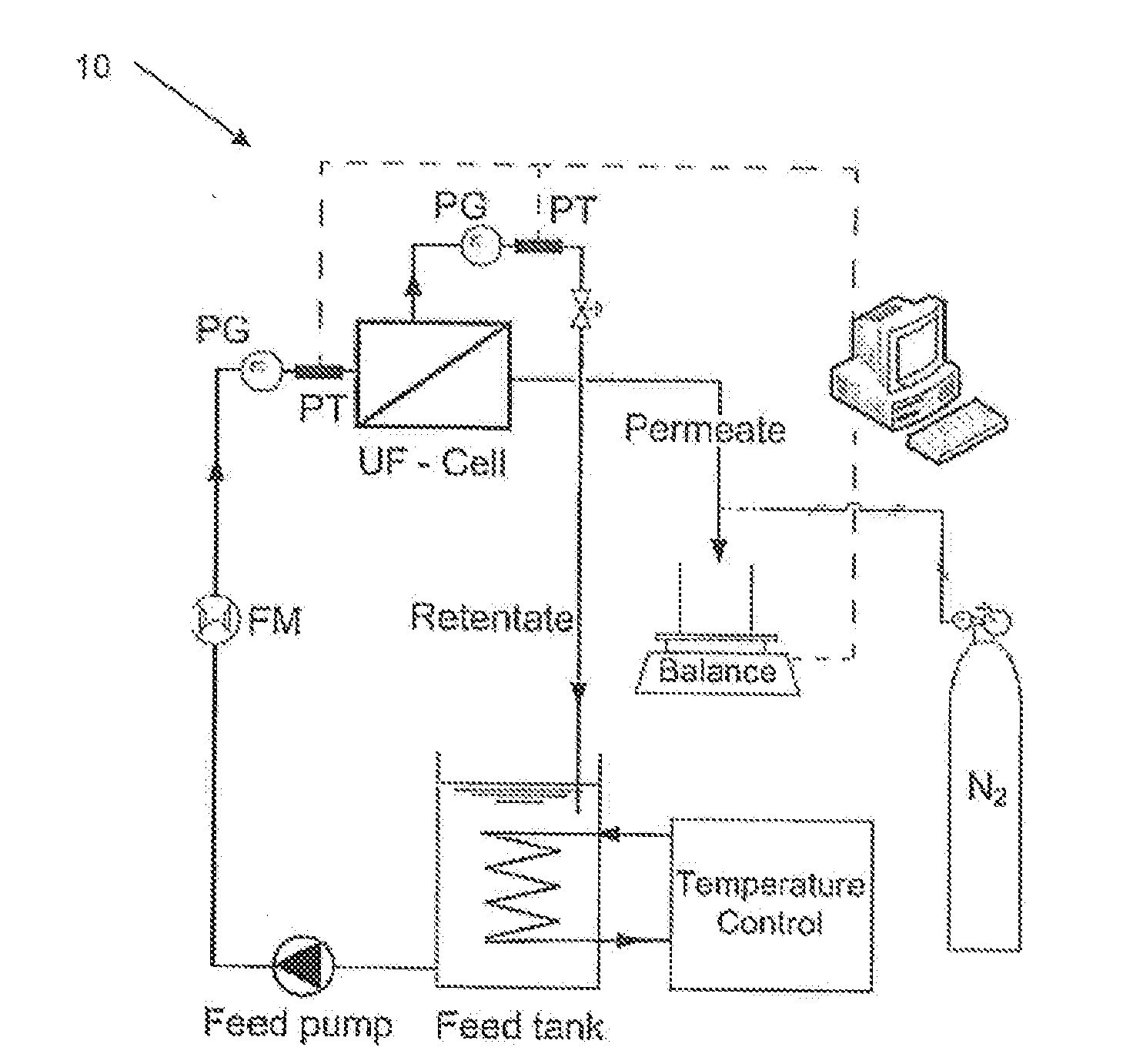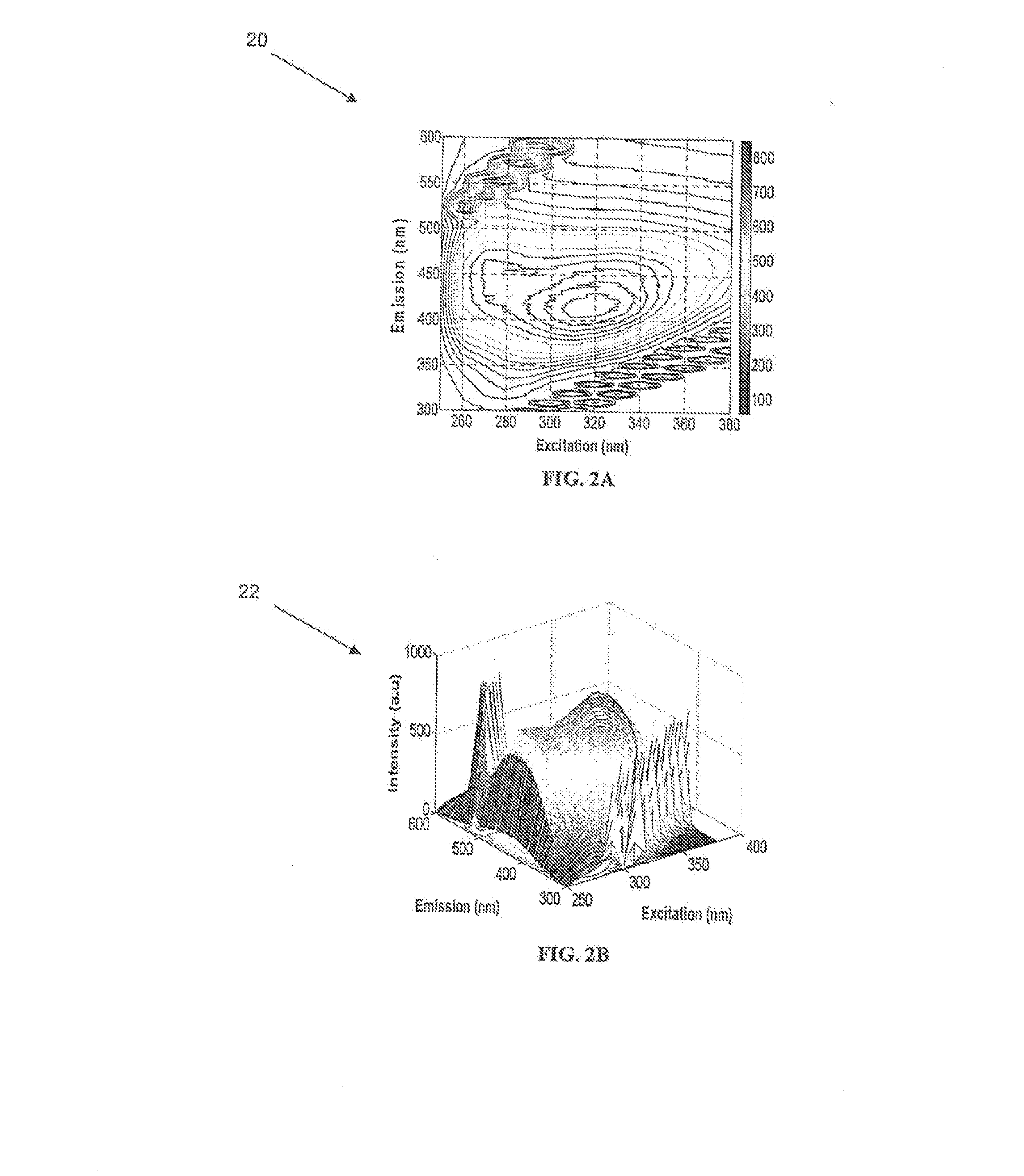Method for fluorescence-based fouling forecasting and optimization in membrane filtration operations
a technology of membrane filtration and forecasting, applied in the direction of fluorescence/phosphorescence, instruments, and membranes, can solve the problems of increasing water treatment operating costs, membrane fouling, and membrane permeability reduction, and achieve the effect of enhancing the prediction accuracy of the modeling method
- Summary
- Abstract
- Description
- Claims
- Application Information
AI Technical Summary
Benefits of technology
Problems solved by technology
Method used
Image
Examples
Embodiment Construction
[0023]All terms used herein are used in accordance with their ordinary meanings unless the context or definition clearly indicates otherwise. Also, unless indicated otherwise except within the claims the use of “or” includes “and” and vice-versa. Non-limiting terms are not to be construed as limiting unless expressly stated or the context clearly indicates otherwise (for example, “including”, “having”, “characterized by” and “comprising” typically indicate “including without limitation”). Singular forms included in the claims such as “a”, “an” and “the” include the plural reference unless expressly stated or the context clearly indicates otherwise. Further, it will be appreciated by those skilled in the art that other variations of the preferred embodiments described below may also be practiced without departing from the scope of the invention.
[0024]As previously discussed, the present invention proposes a novel fluorescence-based approach for modeling and predicting different fouli...
PUM
 Login to View More
Login to View More Abstract
Description
Claims
Application Information
 Login to View More
Login to View More - R&D
- Intellectual Property
- Life Sciences
- Materials
- Tech Scout
- Unparalleled Data Quality
- Higher Quality Content
- 60% Fewer Hallucinations
Browse by: Latest US Patents, China's latest patents, Technical Efficacy Thesaurus, Application Domain, Technology Topic, Popular Technical Reports.
© 2025 PatSnap. All rights reserved.Legal|Privacy policy|Modern Slavery Act Transparency Statement|Sitemap|About US| Contact US: help@patsnap.com



